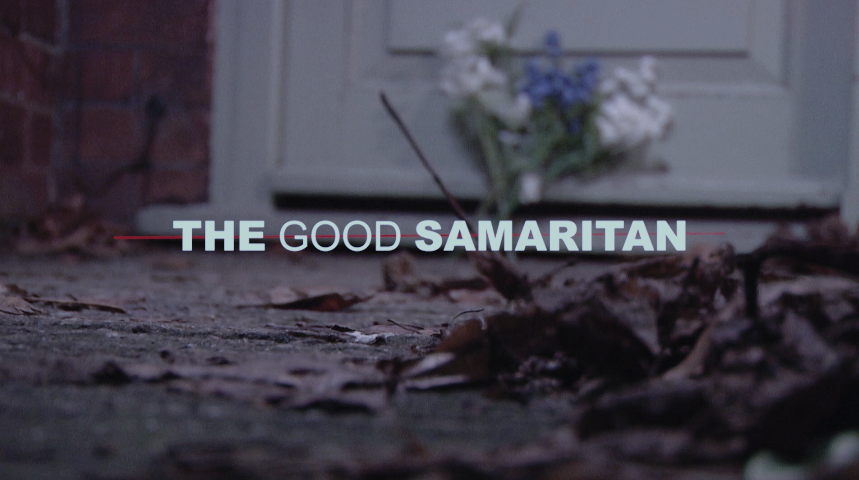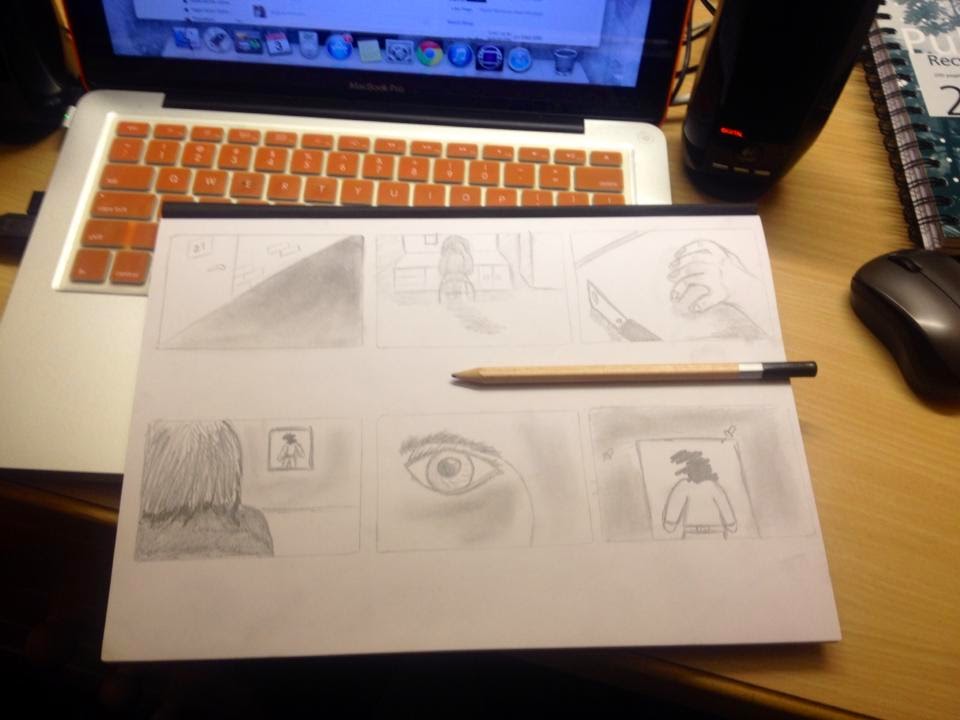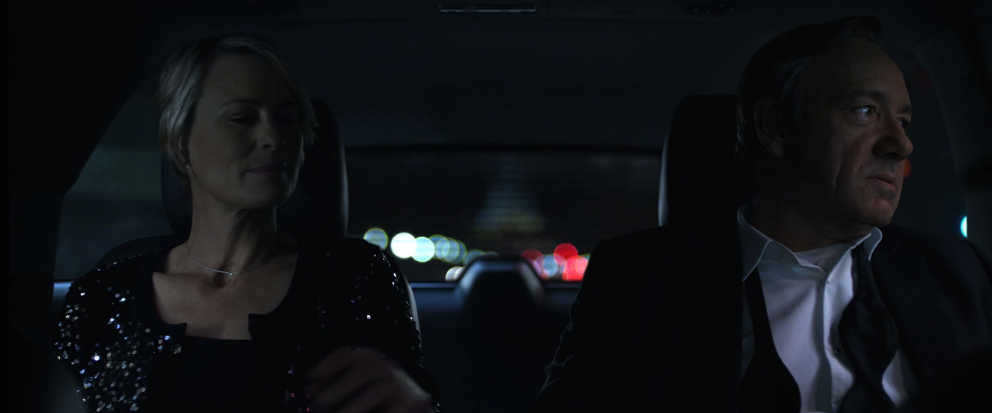
To ensure a Successful Production of our version of the Good Samaritan, we decided to create a basic chart to confirm that everyone within the group understood the dates, times and the equipment that was needed for filming.
Monday 24th November - Filming Day 1
This was the very first day of shooting our production of The Good Samaritan.
Previously we had gone on location to film, to ensure that everything would run smoothly for the actual shoot. On our previous visit we found that we had chosen the wrong time to film, as it ended up being far too dark for the Panasonic HMC151 to handle. This inevitably made us come to the decision that we would film at a much earlier time, and transform the color and light through the editing process on AVID Media Composer.
As with any form of production, it came with it's complications, and sadly we had come across an issue on the very first day of filming. Our mode of transport was to be the use of James Scanlon (Group Member) car, but unfortunately an incident arose which meant it was no longer in use. We were fortunate of having a friend of James help us out with transport, therefore we were able to make it to the planned location.
The original setback had unfortunately created consequences, as we had turned up on location rather late, which led it to be far to dark to film. This as a whole had definitely brought the group moral down, as it was the very first day of filming, but it was indeed something that we had learnt from, and made us prepared for the next day of filming which was to follow.
Wednesday 26th November - Filming Day 2
Having learnt from the previous mishaps on the first day of filming, we began again.
We arrived at the location on time, with the appropriate equipment and started setting up as quickly as possible. The weather yet cold, had stayed dry which had definitely gone in our favor when it came to filming, as the location was an outdoor location.
As myself and Giorgia Perini decided that we would take the role of cinematographer together, we combined our efforts in terms of taking responsibility of the camera angles, as well as it's framing to create a successful short film. During this process we would discuss with each other, making decisions on what we thought would be best for the production. We believed this would be the best way to get the best possible outcome.
As a group we were committed to keeping in line with the plan that we had previously set up during the pre production process, therefore keeping quite true to the storyboard that Giorgia had previously drawn up was very important to us.
As a Cinematographer we had taken many inspirations from various films, and were aiming to create a very dark cinematic feel to film, very similar to film noir. We took inspirations from various films and television programmes such as Psycho by Alfred Hitchcock, to Netflix's House Of Cards by the cinematographer Igor Marinovic.
The things we aspired from these were the lighting, colour, and framing. We wanted to implement similar framing seen in certain scene's from the House Of Cards. The shots seen in HOC were usually very wide angled, and also very symmetrical.
We also took inspiration from the use of colour within the shots, as they provided a very cold feel to the programme, which was something we were looking to create.
Opening Scene 30 Second Clip from Sion Campbell on Vimeo.

Assignment 1 - Short Film Creation The task itself...
As a part of our production technology module, we were given the challenge of creating a short film, 5 minutes long, using a short screenplay script from the website www.australianshortfilms.com
We were asked to do this in groups of 4 or 5, and the main focus of this task was to prove that we understood the 5C's of cinematography, and that we were able to demonstrate this through various skills that we've learnt over the past three months of being on the Digital Film & Post Production Technology course.
As a part of the challenge, we were restricted from using any form of CGI animation, and the final edit should be produced using the AVID MEDIA COMPOSER. The reason for this, is to ensure that we are focused mainly on capturing clean, and clever footage as well as sound. (Which is vital, for any production)
We were able to use any of the relevant equipment that was available to us through the SISO website, such as the PANASONIC HMC151, lighting, such as the Blondes as well as any sound equipment.
Where to begin?
Our group consisted of 4 people :
Myself ( Sion Campbell)
Giorgia Perini
James Scanlon
Charlotte Blount
From this point onwards, we decided that to have a successful production, that we would have to plan throughly, to ensure that we had a smooth process, and that we were all able to communicate easily.
From our first discussion, we came to the decision that the easiest way forward in terms of choosing a script from the Australian Short Film website, would be to give each other a few days to review any scripts that we wanted to individually, then to present our favourite script. By doing this, we felt that it would not restrict us, and that it would make it fair for everyone in the group to pitch their favourite.
We decided to use the social media website Facebook to keep in contact with each other in the meantime, therefore I created a private group that we were able to post, discuss anything we wanted to that was relevant to the production. This proved successful, and is something that we used often during our project.
After a fairly difficult eliminating process of the groups favourite scripts, we managed to come to a decision as a group that we were to carry on forward with the script called '' The Good Samaritan ''
The Good Samaritan - Wadim MatusewiczThe original script can be found using the link below :
http://www.australianshortfilms.com/The-Good-Samaritan.html
One of the main reasons we felt that the script was an appropriate one for this task, was not only for it's interesting provocative storyline, but the fact that it included many descriptive elements that would give us a good focus, when it came to the cinematography side of the production.
We also felt that it was a do-able script to produce into a five minute film which was also a vital part of our task, being only 5 pages long. Although it did need some adapting for it to work as a part of our production, it was no doubt a great script to work with when it came to the planning process.
Where next?
With the decision of the Script out of the way, we were able to now move forward and make decisions on the vital roles on the production such as Director ect.
This was a decision that we didn't take lightly, as it was important to ensure everyone felt they had a fair role, and that they were doing what they felt most comfortable with, which eventually proved to be successful as we had a good working team, with very little problems.
The roles that we had assigned for the production was :
Director - James Scanlon
Cinematography - Giorgia Perini & Myself
Producing & Art Direction - Charlotte Blount
Sound & Editing - Giorgia Perini & Myself
My personal roles in the production were based on the Cinematography, Sound & Editing, and this being combined with Giorgia. The reason for this, was because in our previous discussions, we were both very eager to concentrate on the cinematography element of the production, therefore it would be equally fair if we both took the role, keeping in close contact, and combining both of our ideas together for the final product.
Presentation - Pitch (10 minutes long)
As a part of the project, it was expected for us to Pitch our chosen script to the rest of our colleagues. The guidelines for the presentation were to keep it within ten minutes long, whilst also showing the process that we as a group went through to analyse the script, to planning the production.
To successfully do this, we decided to split the task into several roles. Within this, I took charge of the Risk Assessments & Health and Safety. The treatment document & The location Recce ensuring we had the perfect locations for filming.
Whilst searching for the locations, I was taking into consideration the fact that we were going down the route of film noir, therefore we needed somewhere that would be desolate, dark and mysterious, but still suburban enough to be considered a neighbourhood.
My only concern was that I felt I perhaps should have spoke in some detail regarding the cinematography of our project seeing that it is a role that I was taking part of, combined with Giorgia. But as the presentation roles, I was given the Health & Safety, Treatment Document & the location recce to discuss, therefore felt it would be appropriate to do this, and just keep in regular contact with Giorgia regarding the cinematography.
As a group I was very happy and satisfied with our effort, and I was very proud to be a part of a group with James, Charlotte & Giorgia.
TEST FOOTAGE
------------------------------------------------------------------------------
For the second week of Production Technology, we were given the task of creating and shooting a 12 shot film. The task was given as follows :
Production Technology Week 2 Task
Individually write/design and plan a storyboard a 8 - 12 shot film lasting approx. 45 seconds at the max. No dialogue is required. You could add some sound if you really want to but we advise you to concentrate on visual only.
The aim is to demonstrate you have understood the fundamental skills of cinematography and picture editing. Think about the 5 C’s as much as possible. Remember the key fundamentals of the rule of 3rds, symmetry and single point perspective.
The topic is ‘an event’ and can be designed around anything you wish.
You should create a storyboard of the key parts of the process.
Then shoot the process!
Examples could be
This could be making of a cup of tea, a person getting out of bed and preparing for their day, a person getting into a car and driving off into the distance etc.
But remember that the images need to implement the following skills.
Focus eye piece
Focus camera
White Balance
Set exposure
Set shutter (film like shutter is 1/180d setting)
Turn Zebra’s on
It should all be shot on the Panasonic HMC151. Edit the clips into the sequence for review in the lesson next week. You are free to help each other but one piece is needed per student. If you complete them before next week you can if you know how render the clip out as an mp4 and send it to me.
-------------------------------------------------------------------------------------
-------------------------------------------------------------------------------------
From this point onwards, I had to think of a way of presenting a 45 second video that would be able to portray an event. As I'm personally a fan of thriller/horror movies, I decided to go down this route and create a scene that portrayed a psychotic woman, whose intention is to kill. I wanted to create a rather dark and bleak image for this film, with only hints of light, to keep the sense of eeriness.
Moving forward with the idea, it was time for me to think of storyboard. Bearing in mind, I had to make sure that I only had 12 shots to create the whole scene. As I had a rather clear image in my head that I wanted, thinking of each shot became rather easily when putting it down on paper, if only It had been as simple when shooting.
Here is the working progress of my storyboard...


Information displayed on your bookings, and what time/date you have booked them for!
Filming Day! With the storyboard complete, and the equipment booked, it was time to collect it, and get ready for shooting! As I had issues at first booking on SISO, it had to try and film the sequence and edit in the same afternoon, as the task had to be handed in the following day!
Once we got to the location, It was time to set up the tripod and attach the camera. Having done that I had to ensure that
The Killing from Sion Campbell on Vimeo.
































No comments:
Post a Comment